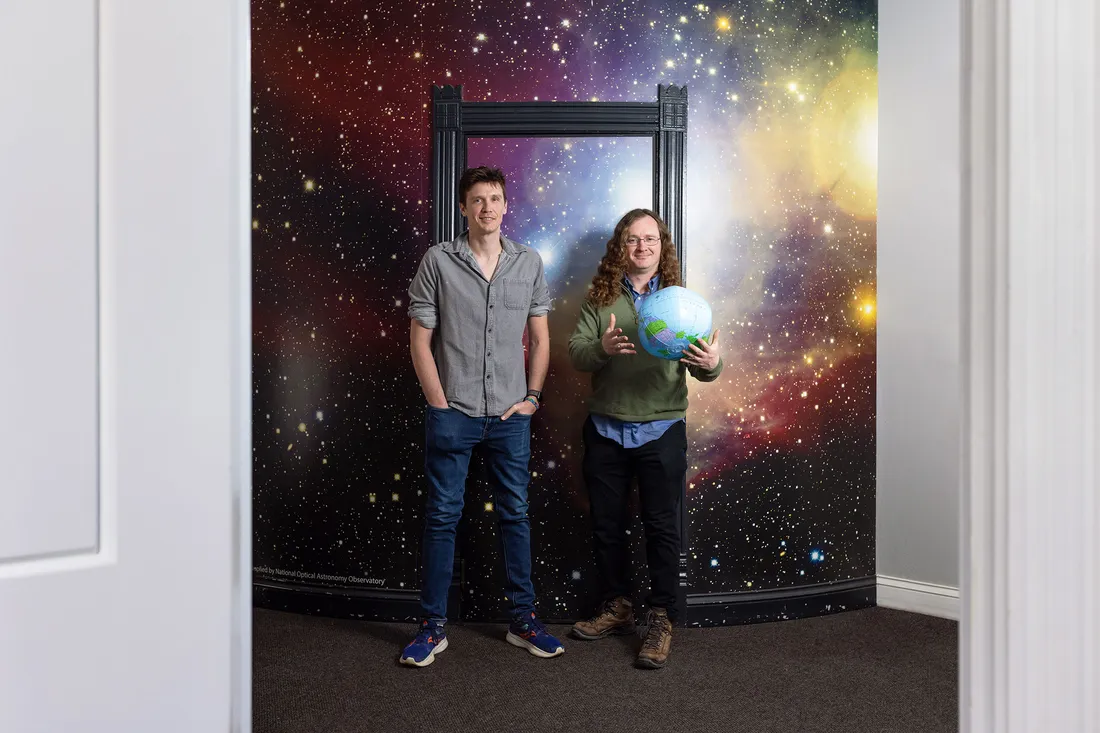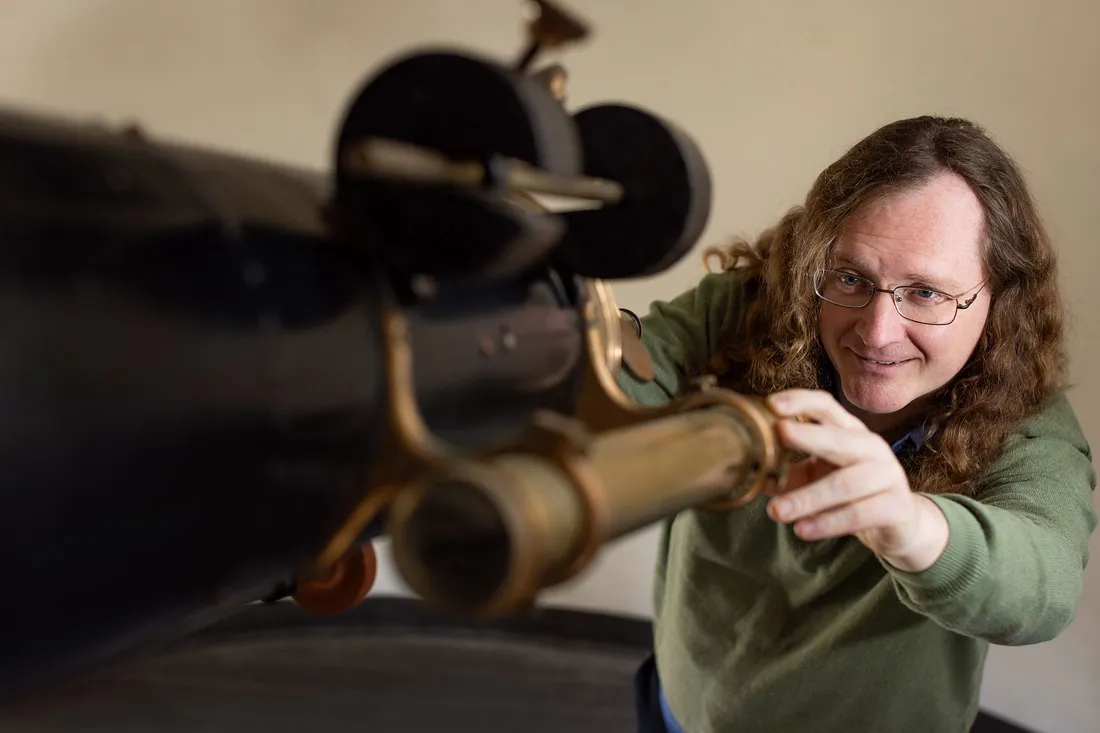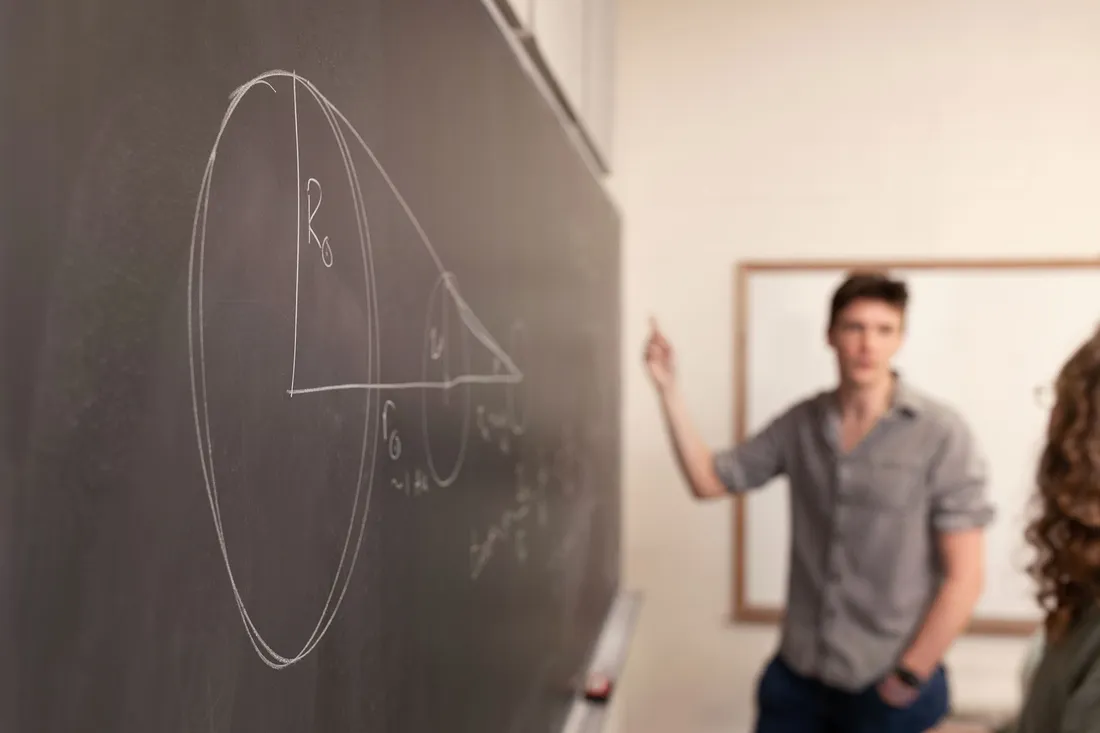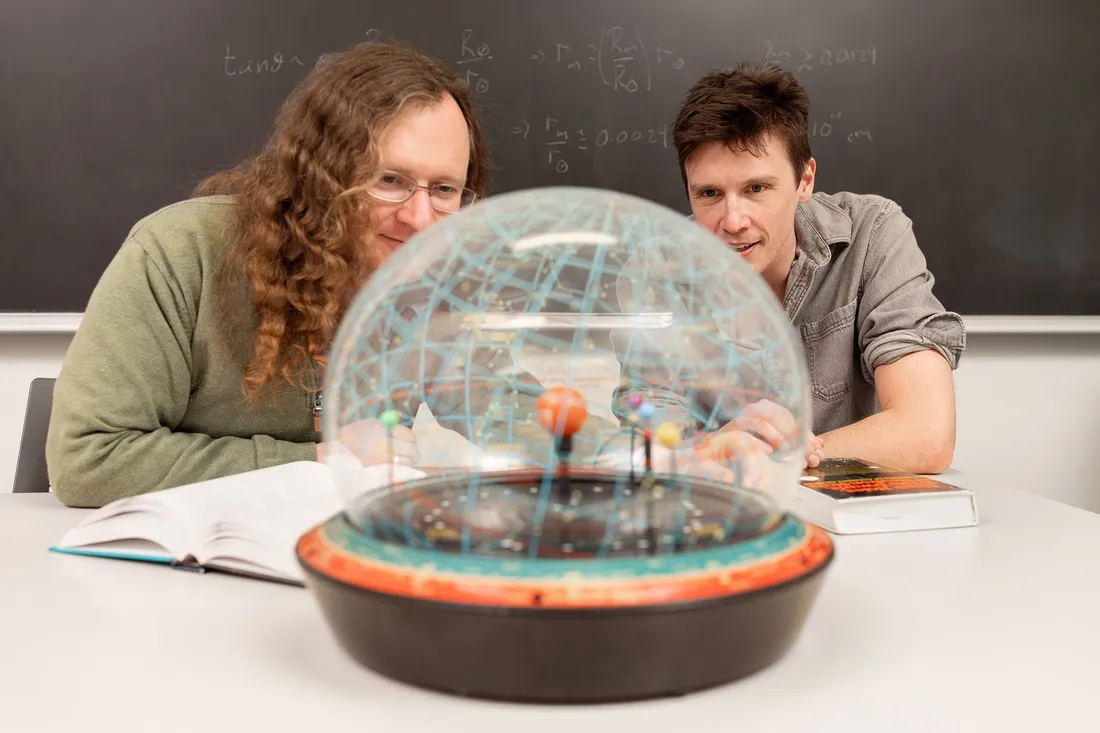
Eric Coughlin (left) and Walter Freeman standing in Holden Observatory. They are both professors of physics in Syracuse University’s College of Arts and Sciences.
On April 8, at 3:23 p.m., the Syracuse University community is set to experience a total solar eclipse, with the moon completely obscuring the sun for 1 minute and 26 seconds.
In anticipation of this rare celestial alignment, we spoke with two professors from the College of Arts and Sciences’ Department of Physics, Eric Coughlin (EC) and Walter Freeman (WF), to learn more about the upcoming solar eclipse and how these events have contributed to scientific understanding.
What is a solar eclipse, and how does it occur?
WF: First, we need to distinguish it from the phases of the moon—the reason we have phases of the moon is because the moon moves around the Earth, where the side pointing at the sun is always bright and the side pointing away from the sun is always dark. When the bright side is facing the Earth, it’s a full moon. When the dark side is facing the Earth, that’s a new moon.
A solar eclipse is when a new moon gets exactly between the Earth and the sun.
How big something appears depends both on how far away it is from you, and how big it really is. The sun is way bigger than the moon, but the moon is also much closer to the Earth than the sun. We call it angular size in geometry—how many degrees something appears to cover in the sky, rather than how many kilometers across it is. The moon and the sun are almost the exact same angular size—a massive coincidence—which allows for the total solar eclipse to occur.

Freeman and the Holden Observatory telescope, which is over 100 years old. Freeman says he opens his Introduction to Astronomy classes by talking about the development of astronomy as a “parable of the development of human capability.”
Why aren’t they more common?
EC: The moon’s orbit about the Earth is inclined with respect to the Earth’s orbit about the sun by about five degrees. So, if you picture the plane about which the Earth is orbiting the sun, known as the ecliptic, the moon’s orbit is inclined to that plane ever so slightly most of the time. That’s why we don’t get a lunar and a solar eclipse every month—it has to line up perfectly.
In fact, in many millions of years, there will no longer be total solar eclipses. The moon is tidally locked to the Earth, meaning it rotates about its own axis at the same rate at which it orbits the Earth, so we’re always seeing the same physical side of the moon. But the Earth is not tidally locked to the moon, so there’s a nonlinear tidal interaction between the Earth and moon, where the moon is trying to slow the 24-hour rotational period of the Earth. The consequence of that is the addition of angular momentum to the moon-Earth orbit. So, ever so slightly, and over a really long timescale, the moon is actually drifting away from the Earth, meaning that its angular size on the sky will eventually be smaller than that of the sun, thus preventing solar eclipses.
In many millions of years, there will no longer be total solar eclipses.
Professor Eric Coughlin
What can people expect to see?
EC: It will suddenly get darker, and the temperature will drop. It’s extremely bizarre, and you can imagine why ancient cultures were freaked out.
How have solar eclipses informed the course of human history?
WF: Astronomy is older than recorded history—the sun, moon and stars were doing the same dance up there before we were here to look at them. We’d say, “like clockwork,” but it really was clockwork for ancient people: They used the timing of those motions to measure time and used their shape to orient and navigate. Many cultures connected many astronomical happenings to mythology or religion. I think because people realized they relied on the sun for life, it was seen as an omen of terror when something seemed to happen to the sun during a solar eclipse.

For a total solar eclipse, the sun, moon and Earth must line up perfectly, as shown on the chalkboard. However, Freeman explains that because the moon’s orbit around the Earth is not a perfect circle, “sometimes the moon is a little further away—it's angular size is a bit smaller—and that's when you get the phenomenon of the ring of fire, which is an annular solar eclipse.”
How have solar eclipses contributed to scientific understanding?
EC: First thing I think of is the magnetic field of the sun. The sun has a sunspot cycle that repeats every 22 years, where the orientation of the sun’s magnetic field, its dipole, flips after 11 years [north becomes south and south becomes north], and then flips back after another 11 years. Those magnetic fields are responsible for producing the sunspots, so depending on the time of the solar eclipse during the 22-year sunspot cycle, the sun will be more or less magnetically active, and the field will look more or less bordered. That allows us to study the magnetic topology of the sun from the Earth and to see things like the diffuse outer layers of the solar atmosphere, known as its corona.

Freeman and Coughlin with a model of the solar system, called the Helios Planetarium, that includes a star dome with major stars and constellations.
Will the solar eclipse be a topic in your classes this semester?
WF: It’s not exactly topical for my class this semester, but I’m going to talk about the humanity of it—the idea that it is happening, and that physics is not just a tool to calculate things, it’s also a window to the world. It is part of their education as scientists to go out and admire it.
Physics is not just a tool to calculate things, it’s also a window to the world.
Professor Walter Freeman


